: 2025
: 2024
: 2023
: 2022
: 2021
: 2020
: 2019
: 2018
: 2017
: 2016
: 2015
: 2014
: 2013
: 2012
: 2011
: 2010
: 2009
: 2008
: 2007
:



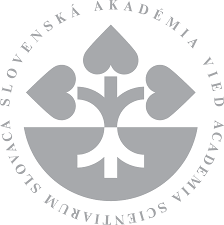


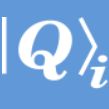
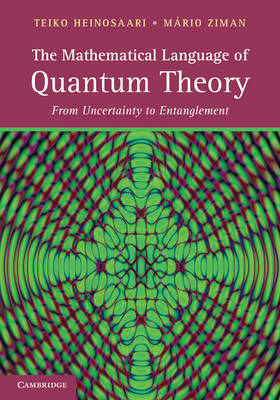
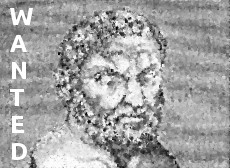 23.12.2020 Job opening
23.12.2020 Job opening
Postdoc position within project QISS @ IPSAS Applications are invited for a 18 month postdoc position at the intersection between quantum foundations, quantum information theory, and quantum gravity (previous experience in at least one of these areas is required). The position may start as soon as a suitable candidate is found. The post is partly funded by the John Templeton Foundation through the project "The Quantum Information Structure of Spacetime" (www.qiss.fr) and partly by Institute of Physics of Slovak Academy of Sciences. The postdoc is expected to work in close collaboration with M. Ziman, A. Gendiar, M. Sedlák or D.Nagaj. Basic gross salary is 1800 eur / month, however, additional funds, depending on the focus and performance, are expected. The application consists of CV (including list of publications), research statement (short summary of personal research interests and plans), and three names of potential referees we might ask for recommendation. Please send all this information to Michal Sedlak by email (michal.sedlak@savba.sk) before January 31th 2021 (but the sooner the better), but we can interview candidates and fill the position also earlier. Only complete applications will be considered. |
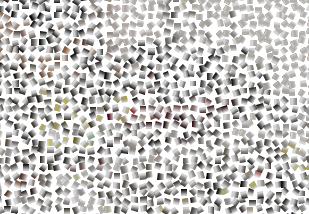 20.12.2020 Job opening
20.12.2020 Job opening
Postdoc position 20.21 We are opening postdoc positions in the area of both theoretical and experimental quantum information technologies. In particular, we seek for a young experienced researcher capable of leading independently a quantum network project (establishing a node for quantum communication network within the quapital.eu initiative), but the positions are not limited to this. Successful candidates are expected to work in close collaboration with core members of RCQI on topics of their common interests (quantum communication, quantum complexity theory, quantum simulations, quantum foundations, etc.). Basic gross salary franges from 1400-2800 eur / month (depending on the funding scheme and experience), however, additional funds, depending on the focus and performance, are expected. The position is offered for 1-3 years. The application consists of CV (including list of publications), research statement (short summary of personal research interests and plans), and three names of potential referees we might ask for recommendation. Please send all this information to Michal Sedlak by email (michal.sedlak@savba.sk) before January 31st. Only complete applications are considered. |
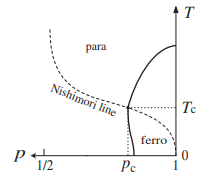 26.10.2020 Publication
26.10.2020 Publication
Entanglement Entropy on the Boundary of the Square-Lattice ±J Ising Model
The entanglement entropy S is calculated on the system boundary of the square-lattice ±J Ising model by the time-evolving block decimation (TEBD) method. The random average ⟨S&rangle is evaluated on the Nishimori line, through the successive multiplications of transfer matrices, whose width N is up to 300. It is confirmed that ⟨S⟩ shows critical singularity around the Nishimori point.
by
Yoshinori Sasagawa, Hiroshi Ueda, Jozef Genzor, Andrej Gendiar, and Tomotoshi Nishino
J. Phys. Soc. Jpn. 89, 114005 (2020) | +++ | EXSES APVV-16-0186 |
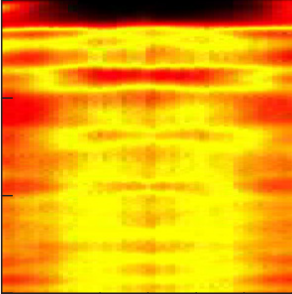 21.10.2020 Publication
21.10.2020 Publication
Nonlinear spin filter for nonmagnetic materials at zero magnetic field
The ability to convert spin accumulation to charge currents is essential for applications in spintronics. In semiconductors, spin-to-charge conversion is typically achieved using the inverse spin Hall effect or using a large magnetic field. Here we demonstrate a general method that exploits the nonlinear interactions between spin and charge currents to perform all-electrical, rapid, and noninvasive detection of spin accumulation without the need for a magnetic field. We demonstrate the operation of this technique with ballistic GaAs holes as a model system with strong spin-orbit coupling, in which a quantum point contact provides the nonlinear energy filter. This approach is generally applicable to electron and hole systems with strong spin-orbit coupling.
by
E. Marcellina, A. Srinivasan, F. Nichele, P. Stano, D. A. Ritchie, I. Farrer, Dimitrie Culcer, and A. R. Hamilton
Phys. Rev. B 102, 140406(R) (2020) | +++ | NONE |
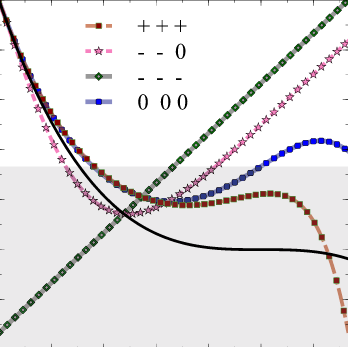 12.10.2020 Publication
12.10.2020 Publication
Superposition of causal order enables quantum advantage inteleportation under very noisy channels
We show that thefidelity offered by the standard teleportation protocol under noisy channels appliedsuccessively can be significantly improved, when used in conjunction with a quantum switch. Inparticular, wefind that for two such teleportation channels conjugated with an indefinite causal order,teleportationfidelity beyond the classical threshold is achieved for significantly larger noise thanwould be possible conventionally. One can even make the effective teleportation channel perfectlyfaithful for very large noise. We also discuss the generalization of our scheme for more than twopathways, and define afigure of merit in that context.
by
Chiranjib Mukhopadhyay and Arun Kumar Pati
Journal of Physics Communication 4, 105003 (2020) | +++ | OPTIQUTE APVV-18-0518, HOQIT VEGA 2/0161/19 |
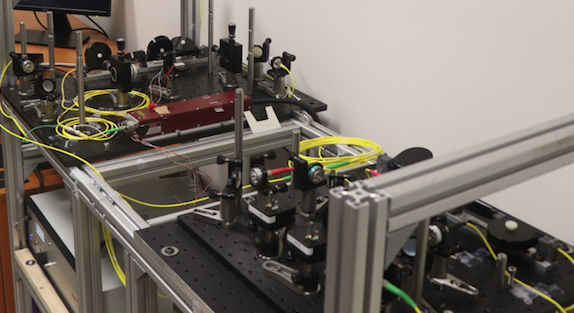 06.10.2020 Interview
06.10.2020 Interview
Slovaks tests unbreakable cryptosystem aiming to connect Bratislava and Vienna interview with prof. Vladimír Bužek for online IT technology journal http://zive.aktuality.sk/ by Jan Trangel and Filip Hanker (in Slovak)
Slováci testujú neprelomiteľný spôsob šifrovania, idú spojiť Bratislavu a Viedeň. Pri súčasnej vedomosti o tom, ako vyzerá fyzika a svet, nie je kvantovú šifru možné zlomiť, hovorí o prevratnej technológii profesor Vladimír Bužek, jeden z najcitovanejších slovenských fyzikov ... || pdf ||
|
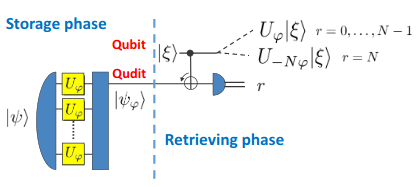 17.09.2020 Publication
17.09.2020 Publication
Probabilistic storage and retrieval of qubit phase gates
Probabilistic storage and retrieval (PSR) of unitary quantum dynamics is possible with exponentially small failure probability with respect to the number of systems used as a quantum memory [M. Sedlák, A. Bisio, and M. Ziman, Phys. Rev. Lett. 122, 170502 (2019)]. Here we study improvements due to a priori knowledge about the unitary transformation to be stored. In particular, we study N→1 PSR of qubit phase gates, i.e., qubit rotations around the Z axis with an unknown angle, and show that if we access the gate only N times the optimal probability of perfect retrieving of its single use is N/(N+1). We propose a quantum circuit realization for the optimal protocol and show that a programmable phase gate [G. Vidal, L. Masanes, and J. I. Cirac, Phys. Rev. Lett. 88, 047905 (2002)] can be turned into a (2k−1)→1 optimal PSR of phase gates and requires only k controlled-not gates, while having exponentially small failure probability in k.
by
Michal Sedlák and Mário Ziman
Phys. Rev. A 102, 032618 (2020) | +++ | OPTIQUTE APVV-18-0518, HOQIT VEGA 2/0161/19, QuantERA project HIPHOP, QISS |
 01.07.2020 Conference
01.07.2020 Conference
Informal quantum symposium 2020 Informal quantum symposium (IQUAS) aims to bring together experts working in the area of quantum information science and technologies and to create a motivating environment full of scientific interactions and discussions (while keeping the regulation of safe distance :-). Conceptually, IQUAS stands somewhere between workshops and unconferences, thus, its goal is not only to present new results, but also to discuss research problems in the areas of interests of participants. Except of either presenting their recent results (as short talks and posters), or give a tutorial on recent scientific topics, participants are expected to actively discuss their current research interests with other participants. The number of participants is limited. Dates: 24-28/08/2020 Place: Smolenice, Slovakia Meeting website http://qute.sk/iquas/ |
 14.08.2020 Publication
14.08.2020 Publication
Easing the Monte Carlo sign problem
Quantum Monte Carlo (QMC) methods are the gold standard for studying equilibrium properties of quantum many-body systems. However, in many interesting situations, QMC methods are faced with a sign problem, causing the severe limitation of an exponential increase in the runtime of the QMC algorithm. In this work, we develop a systematic, generally applicable, and practically feasible methodology for easing the sign problem by efficiently computable basis changes and use it to rigorously assess the sign problem. Our framework introduces measures of non-stoquasticity that—as we demonstrate analytically and numerically—at the same time provide a practically relevant and efficiently computable figure of merit for the severity of the sign problem. Complementing this pragmatic mindset, we prove that easing the sign problem in terms of those measures is generally an NP-complete task for nearest-neighbor Hamiltonians and simple basis choices by a reduction to the MAXCUT-problem.
by
Dominik Hangleiter, Ingo Roth, Daniel Nagaj and Jens Eisert
Science Advances 6, eabb8341 (2020) | +++ | QETWORK APVV-14-0878, VEGA MAXAP 2/0173/17 |
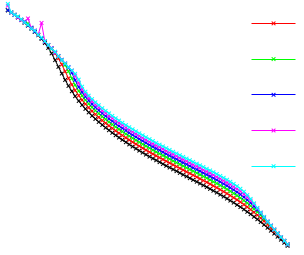 13.07.2020 Publication
13.07.2020 Publication
Absence of logarithmic divergence of the entanglement entropies at the phase transitions of a 2D classical hard rod model
Entanglement entropy is a powerful tool to detect continuous, discontinuous and even topological phase transitions in quantum as well as classical systems. In this work, von Neumann and Renyi entanglement entropies are studied numerically for classical lattice models in a square geometry. A cut is made from the center of the square to the midpoint of one of its edges, say the right edge. The entanglement entropies measure the entanglement between the left and right halves of the system. As in the strip geometry, von Neumann and Renyi entanglement entropies diverge logarithmically at the transition point while they display a jump for first-order phase transitions. The analysis is extended to a classical model of non-overlapping finite hard rods deposited on a square lattice for which Monte Carlo simulations have shown that, when the hard rods span over 7 or more lattice sites, a nematic phase appears in the phase diagram between two disordered phases. A new Corner Transfer Matrix Renormalization Group algorithm (CTMRG) is introduced to study this model. No logarithmic divergence of entanglement entropies is observed at the phase transitions in the CTMRG calculation discussed here. We therefore infer that the transitions neither can belong to the Ising universality class, as previously assumed in the literature, nor be discontinuous.
by
Christophe Chatelain and Andrej Gendiar
The European Physical Journal B 93, 134 (2020) | +++ | EXSES APVV-16-0186 |
 15.07.2020 Job opening
15.07.2020 Job opening
Postdoc position within project QISS @ IPSAS Applications are invited for a 18 month postdoc position at the intersection between quantum foundations, quantum information theory, and quantum gravity (previous experience in at least one of these areas is required). The position may start in September 2020 or as soon as possible thereafter. The post is partly funded by the John Templeton Foundation through the project "The Quantum Information Structure of Spacetime" (www.qiss.fr) and partly by Institute of Physics of Slovak Academy of Sciences. The postdoc is expected to work in close collaboration with M. Ziman, A. Gendiar, M. Sedlák or D.Nagaj. Basic gross salary is 1800 eur / month, however, additional funds, depending on the focus and performance, are expected. The application consists of CV (including list of publications), research statement (short summary of personal research interests and plans), and three names of potential referees we might ask for recommendation. Please send all this information to Michal Sedlak by email (michal.sedlak@savba.sk) before August 15th 2020, but the sooner the better. Only complete applications are considered. |
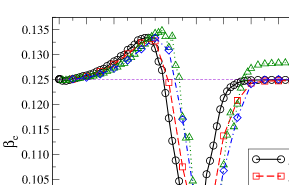 13.07.2020 Publication
13.07.2020 Publication
Full nonuniversality of the symmetric 16-vertex model on the square lattice
We consider the symmetric two-state 16-vertex model on the square lattice whose vertex weights are invariant under any permutation of adjacent edge states. The vertex-weight parameters are restricted to a critical manifold which is self-dual under the gauge transformation. The critical properties of the model are studied numerically with the Corner Transfer Matrix Renormalization Group method. Accuracy of the method is tested on two exactly solvable cases: the Ising model and a specific version of the Baxter eight-vertex model in a zero field that belong to different universality classes. Numerical results show that the two exactly solvable cases are connected by a line of critical points with the polarization as the order parameter. There are numerical indications that critical exponents vary continuously along this line in such a way that the weak universality hypothesis is violated.
by
Eva Pospíšilová, Roman Krčmár, Andrej Gendiar, and Ladislav Šamaj
Phys. Rev. E 102, 012125 (2020) | +++ | CRIPONT (VEGA 2/0123/19), EXSES (APVV-16-0186) |
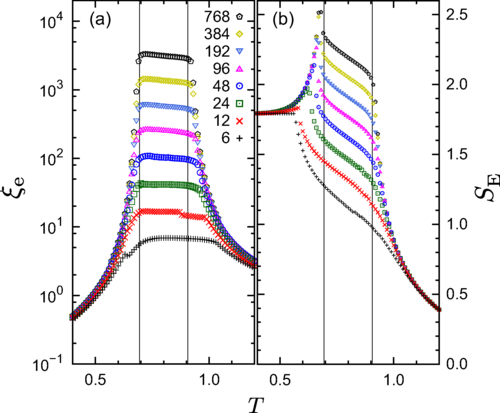 04.06.2020 Publication
04.06.2020 Publication
Finite-m scaling analysis of Berezinskii-Kosterlitz-Thouless phase transitions and entanglement spectrum for the six-state clock model
We investigate the Berezinskii-Kosterlitz-Thouless transitions for the square-lattice six-state clock model with the corner-transfer matrix renormalization group (CTMRG). Scaling analyses for effective correlation length, magnetization, and entanglement entropy with respect to the cutoff dimension m at the fixed point of the CTMRG provide transition temperatures consistent with a variety of recent numerical studies. We also reveal that the fixed-point spectrum of the corner-transfer matrix in the critical intermediate phase of the six-state clock model is characterized by the scaling dimension consistent with the c=1 boundary conformal field theory associated with the effective Z_6 dual sine-Gordon model.
by
Hiroshi Ueda, Kouichi Okunishi, Kenji Harada, Roman Krčmár, Andrej Gendiar, Seiji Yunoki, and Tomotoshi Nishino
Phys. Rev. E 101, 062111 (2020) | +++ | CRIPONT (VEGA 2/0123/19), EXSES (APVV-16-0186) |
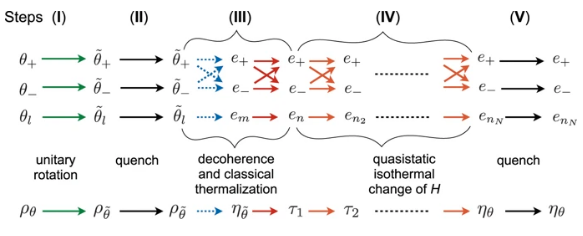 19.05.2020 Publication
19.05.2020 Publication
Energetic footprints of irreversibility in the quantum regime
In classical thermodynamic processes the unavoidable presence of irreversibility, quantified by the entropy production, carries two energetic footprints: the reduction of extractable work from the optimal, reversible case, and the generation of a surplus of heat that is irreversibly dissipated to the environment. Recently it has been shown that in the quantum regime an additional quantum irreversibility occurs that is linked to decoherence into the energy basis. Here we employ quantum trajectories to construct distributions for classical heat and quantum heat exchanges, and show that the heat footprint of quantum irreversibility differs markedly from the classical case. We also quantify how quantum irreversibility reduces the amount of work that can be extracted from a state with coherences. Our results show that decoherence leads to both entropic and energetic footprints which both play an important role in the optimization of controlled quantum operations at low temperature.
by
M. H. Mohammady, A. Auffèves and J. Anders
Communications Physics 3, 89 (2020) | +++ | MoRePro project OPEQ (19MRP0027), COST MP1209 |
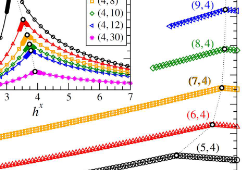 08.05.2020 Publication
08.05.2020 Publication
Area-Law Study of Quantum Spin System on Hyperbolic Lattice Geometries
Magnetic properties of the transverse-field Ising model on curved (hyperbolic) lattices are studied by a tensor product variational formulation that we have generalized for this purpose. First we identify the quantum phase transition for each hyperbolic lattice by calculating the magnetization. We study the entanglement entropy at the phase transition in order to analyze the correlations of various subsystems located at the center with the rest of the lattice. We confirm that the entanglement entropy satisfies the area law at the phase transition for fixed coordination number, i.e., it scales linearly with increasing size of the subsystems. On the other hand, the entanglement entropy decreases as power-law with respect to the increasing coordination number.
by
A. Gendiar
Acta Physica Polonica A 137, 589 (2020) | +++ | APVV-16-0186 (EXSES), VEGA 2/0123/19 (CRIPONT), JTF QISS |
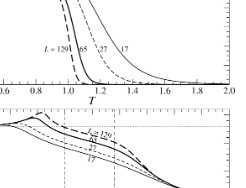 08.05.2020 Publication
08.05.2020 Publication
Entanglement-Entropy Study of Phase Transitions in Six-State Clock Model
The Berezinskii-Kosterlitz-Thouless transitions of the six-state clock model on the square lattice are investigated by means of the corner-transfer matrix renormalization group method. A classical analog of the entanglement entropy S(L,T) is calculated for L×L square system up to L=129, as a function of temperature T. The entropy exhibits a peak at T=T*(L), where the temperature depends on both L and the boundary conditions. Applying the finite-size scaling to T*(L) and assuming presence of the Berezinskii-Kosterlitz-Thouless transitions, the two distinct phase-transition temperatures are estimated to be T1=0.70 and T2=0.88. The results are in agreement with earlier studies. It should be noted that no thermodynamic functions have been used in this study.
by
R. Krčmár, A. Gendiar, T. Nishino
Acta Physica Polonica A 137, 598 (2020) | +++ | APVV-16-0186 (EXSES), VEGA 2/0123/19 (CRIPONT) |
 01.05.2020 Competition
01.05.2020 Competition
Euroepan Quantum Future Academy 2020 Open physics competition for Slovak university bachelor and master students in quantum physics. The winners will be offered a summer internship and a participation at the final conference in Berlin. The participation is going to be covered from the resources of the QUTE.sk consortium and by the main organizer in Germany. More information available on the dedicated website http://qute.sk/eqfa2020/. |
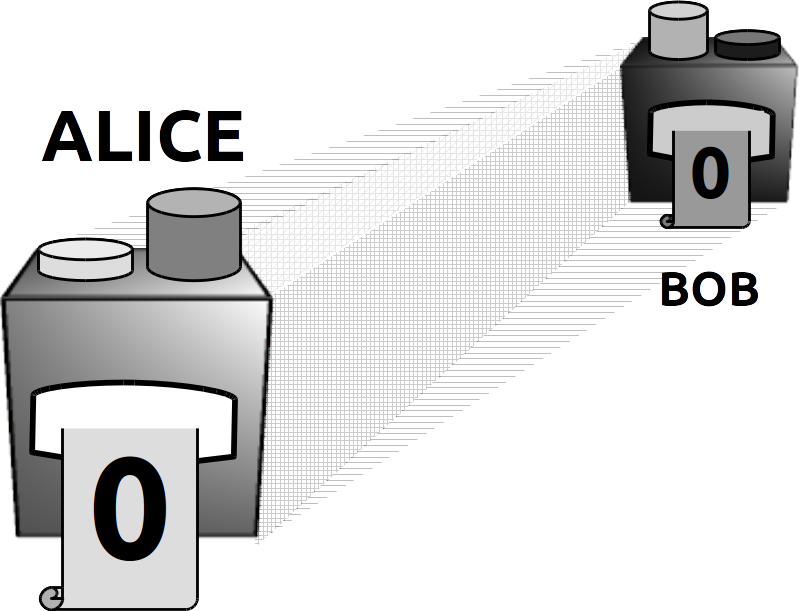 18.4.2020 Publication
18.4.2020 Publication
Popescu-Rohrlich box implementation in general probabilistic theory of processes
It is shown that Popescu-Rohrlich nonlocal boxes (beating the Tsirelson bound for Bell inequality) do exist in the existing structures of both quantum and classical theory. In particular, we design an explicit example of measure-and-prepare nonlocal (but no-signaling) channel being the realization of nonlocal and no-signaling Popescu-Rohrlich box within the generalized probabilistic theory of processes. Further we present a post-selection-based spatially non-local implementation and show it does not require truly quantum resources, hence, improving the previously known results. Interpretation and potential (spatially non-local) simulation of this form of process nonlocality and the protocol is discussed.
by
Martin Plávala and Mário Ziman
Physics Letters A 384, 126323 (2020) | +++ | APVV-18-0518 (OPTIQUTE), COST Action CA15220, VEGA 2/0173/17 (MAXAP), |
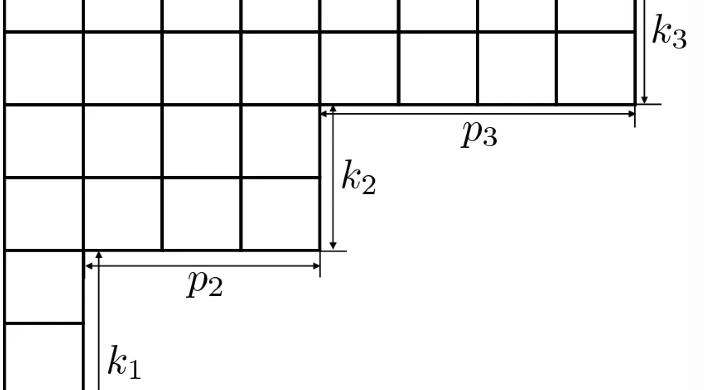 9.4.2020 Publication
9.4.2020 Publication
A note on some new hook-content identities
Based on the work of Vershik (J Sov Math 59(5):1029–1040, 1992), we introduce two new combinatorial identities. We show how these identities can be used to prove a new hook-content identity. The main motivation for deriving this identity was a particular optimization problem in the field of quantum information processing.
by
Michal Sedlak and Alessandro Bisio
Journal of Algebraic Combinatorics (2020) | +++ | QuantERA Project HIPHOP (Project ID 731473), Projects QETWORK (APVV-14-0878), MAXAP (VEGA 2/0173/17) |
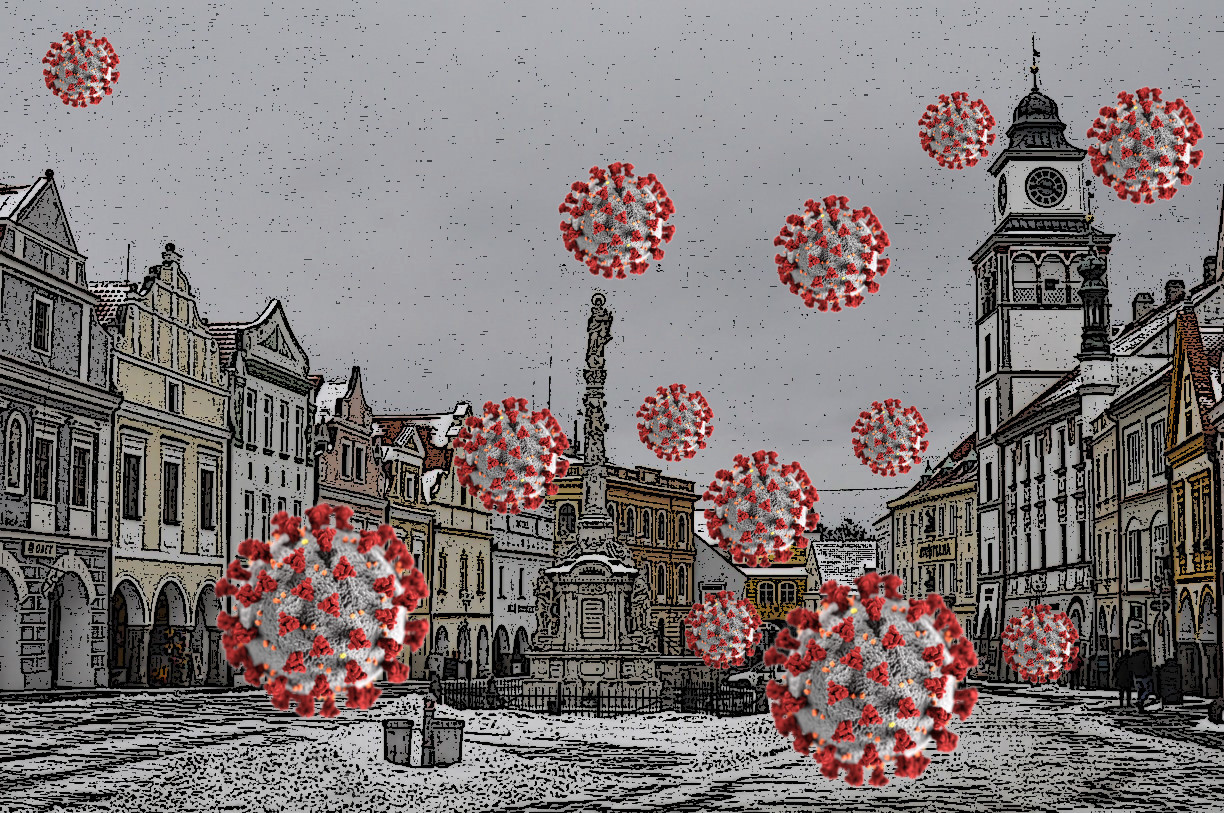 16.03.2020 Conference
16.03.2020 Conference
CEQIP 2020 We regret to inform you that due to COVID-19 spread and frozen mobility we were forced to CANCEL the workshop. Thank you for your understanding and looking forward to see you at CEQIP 202+. |
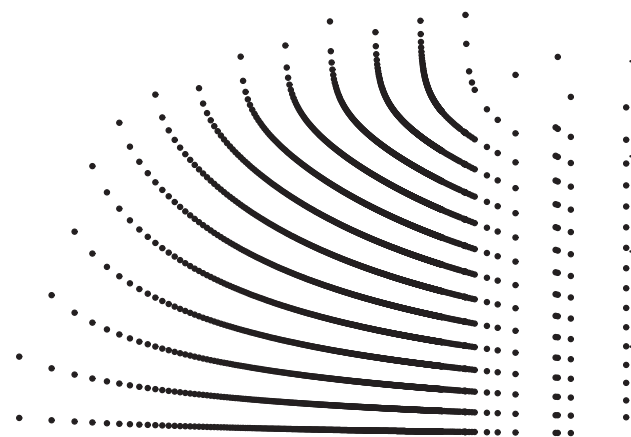 12.03.2020 Publication
12.03.2020 Publication
Area-law-like systems with entangled states can preserve ergodicity
We study the ground entangled state of the one-dimensional spin-1/2 Ising ferromagnet at its transverse-field critical point. When this problem is expressed in terms of independent fermions, we show that the usual thermostatistical sums emerging within Fermi-Dirac statistics can, for an L-sized subsystem, be indistinctively taken up to L terms or up to lnL terms, providing a neat understanding of the origin of the logarithmic scaling of the entanglement entropy in the system. This is interpreted as a compact occupancy of the phase-space of the L-subsystem, hence standard Boltzmann-Gibbs thermodynamics quantities with an effective system size V ≈ ln(L) are appropriate and are explicitly calculated. The calculations are then to be done in a Hilbert space whose effective dimension is 2ln(L) instead of 2L. In this we can assume ergodicity. Our analysis suggests a scenario where the physical systems are essentially grouped into three classes, in terms of their phase-space occupancy, ergodicity and Lebesgue measure.
by
Andre M. C. Souza, Peter Rapčan and Constantino Tsallis
The European Physical Journal Special Topics 229, 759–772 (2020) | +++ | NONE |
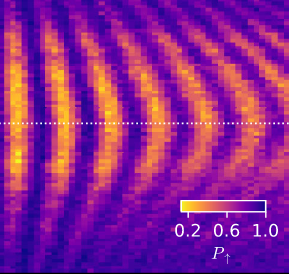 10.03.2020 Publication
10.03.2020 Publication
Coherence of a Driven Electron Spin Qubit Actively Decoupled from Quasistatic Noise
The coherence of electron spin qubits in semiconductor quantum dots suffers mostly from low-frequency noise. During the past decade, efforts have been devoted to mitigate such noise by material engineering, leading to substantial enhancement of the spin dephasing time for an idling qubit. However, the role of the environmental noise during spin manipulation, which determines the control fidelity, is less understood. We demonstrate an electron spin qubit whose coherence in the driven evolution is limited by high-frequency charge noise rather than the quasistatic noise inherent to any semiconductor device. We employ a feedback-control technique to actively suppress the latter, demonstrating a π-flip gate fidelity as high as 99.04±0.23% in a gallium arsenide quantum dot. We show that the driven-evolution coherence is limited by the longitudinal noise at the Rabi frequency, whose spectrum resembles the 1/f noise observed in isotopically purified silicon qubits.
by
Takashi Nakajima, Akito Noiri, Kento Kawasaki, Jun Yoneda, Peter Stano, Shinichi Amaha, Tomohiro Otsuka, Kenta Takeda, Matthieu R. Delbecq, Giles Allison, Arne Ludwig, Andreas D. Wieck, Daniel Loss, and Seigo Tarucha
Phys. Rev. X 10, 011060 (2020) | +++ | NONE |
 11.02.2019 Job opening
11.02.2019 Job opening
PhD positions available Interested to join our research team for four years of you life? That is exactly the time the PhD study takes. Currently, we have open several PhD positions in our Institute. We are open for submissions until the positions are filled (latest 05/03/2020) with PhD starting in September 2020. If interested, as the first step, please get in contact with a potential PhD advisor (send them your cv, motivation letter and contact to someone who may write a recommendation letter), discuss the subject and follow his/her instructions. Do not wait until submission deadline and do this as soon as possible, because the number of positions is limited. |
 01.02.2020 Job opening
01.02.2020 Job opening
Postdoc position 20.20 We are opening a postdoc position in the area of theoretical quantum information theory. The postdoc is expected to work in close collaboration with core members of RCQI on topics of their common interests (quantum communication, quantum complexity theory, quantum simulations, quantum foundations, etc.). Basic gross salary is 1400 eur / month, however, additional funds, depending on the focus and performance, are expected. The position is offered for one year, but there is a possibility for one-year extension. The position is funded by Institute of Physics of Slovak Academy of Sciences. The application consists of CV (including list of publications), research statement (short summary of personal research interests and plans), and three names of potential referees we might ask for recommendation. Please send all this information to Michal Sedlak by email (michal.sedlak@savba.sk) before March 2nd. Only complete applications are considered. |
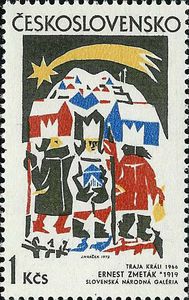 01.01.2020 Conference
01.01.2020 Conference
Three kings conference / Trojkáľová konferencia Annual one day meeting of Czech and Slovak physicists will be held on January 10th in QUTE Auditorium (RCQI, Institute of Physics of Slovak Academy of Sciences) in Bratislava. More information and registration form are available on the meeting website http://quantum.physics.sk/conf/3kk2020. |
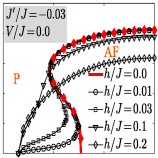 19.09.2019 Publication
19.09.2019 Publication
Influence of applied electric and magnetic fields on a thermally-induced reentrance of a coupled spin-electron model on a decorated square lattice
The combination of an exact and Corner Transfer Matrix Renormalization Group (CTMRG) methods is used to study an influence of external electric and magnetic fields on existence of intriguing reentrant magnetic transitions in a coupled spin-electron model on a decorated square lattice. The two-dimensional (2D) decorated square lattice with localized nodal spins and delocalized electrons is taken into account. It was found that the competition among all involved interactions (the electron hopping, spin-spin and spin-electron interaction, external electric and magnetic fields) in combination with thermal fluctuations can produce new type of reentrant magnetic transitions. Depending on the model parameters the non-zero fields can stabilize or destabilize magnetic reentrance. In addition, an alternative and more effective way, for modulating the magnetic reentrance is found. An origin of intriguing low-temperature round maximum in the specific heat was explained as a consequence of rapid changes in the sublattice magnetizations, which is induced through a competition of all presented interactions.
by
Hana Čenčariková, Jozef Strečka, Andrej Gendiar
Physica E 115, 113717 (2020) | +++ | EXSES APVV-16-0186 |


